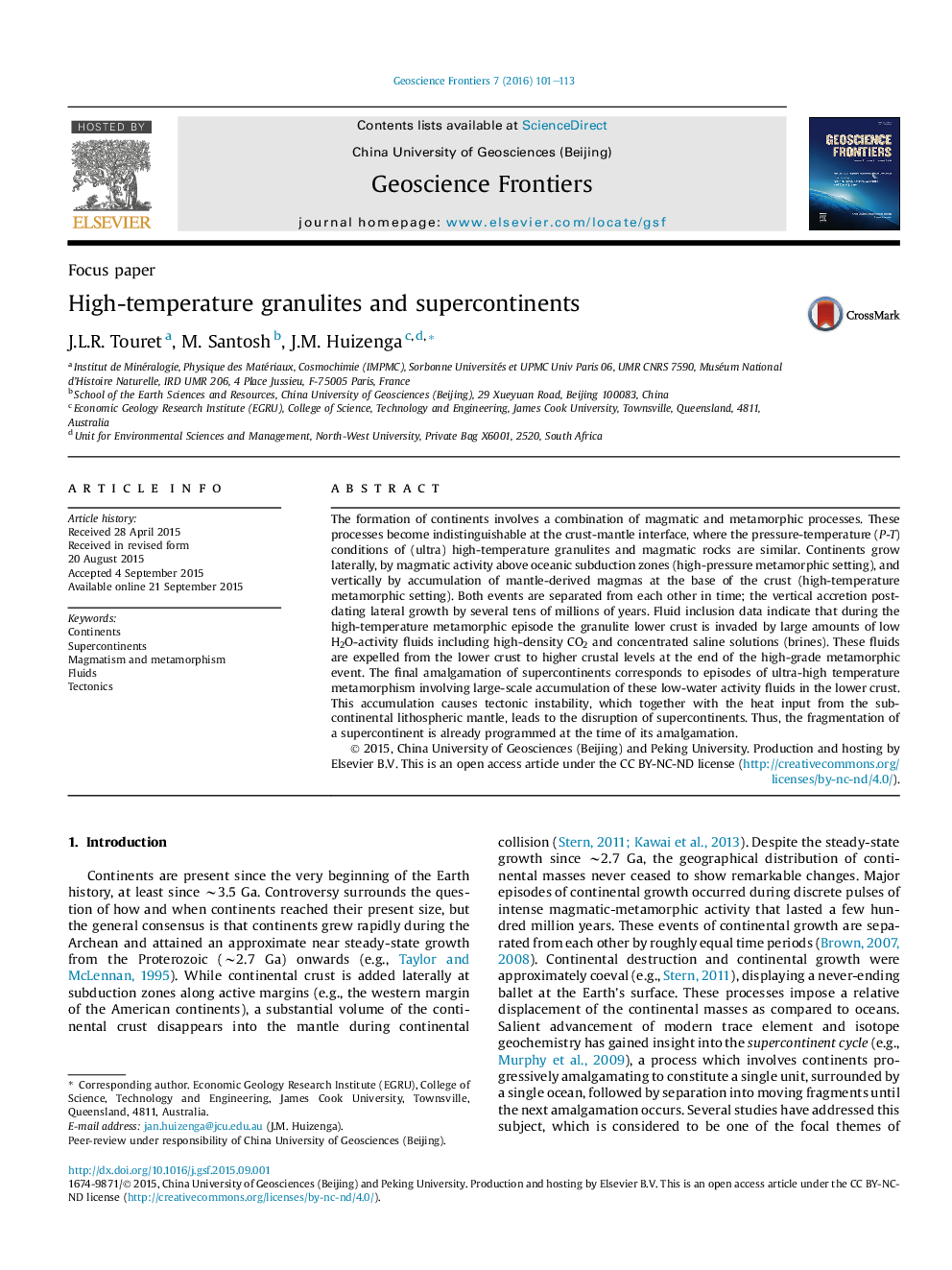| کد مقاله | کد نشریه | سال انتشار | مقاله انگلیسی | نسخه تمام متن |
|---|---|---|---|---|
| 4681528 | 1348855 | 2016 | 13 صفحه PDF | دانلود رایگان |
• The lower crust acts as a temporarily storage for mantle-derived brines and CO2.
• Mantle heating and accumulation of fluids in the lower crust cause supercontinent breakup.
• Lower crustal fluids may reach the surface after supercontinent disruption.
The formation of continents involves a combination of magmatic and metamorphic processes. These processes become indistinguishable at the crust-mantle interface, where the pressure-temperature (P-T) conditions of (ultra) high-temperature granulites and magmatic rocks are similar. Continents grow laterally, by magmatic activity above oceanic subduction zones (high-pressure metamorphic setting), and vertically by accumulation of mantle-derived magmas at the base of the crust (high-temperature metamorphic setting). Both events are separated from each other in time; the vertical accretion postdating lateral growth by several tens of millions of years. Fluid inclusion data indicate that during the high-temperature metamorphic episode the granulite lower crust is invaded by large amounts of low H2O-activity fluids including high-density CO2 and concentrated saline solutions (brines). These fluids are expelled from the lower crust to higher crustal levels at the end of the high-grade metamorphic event. The final amalgamation of supercontinents corresponds to episodes of ultra-high temperature metamorphism involving large-scale accumulation of these low-water activity fluids in the lower crust. This accumulation causes tectonic instability, which together with the heat input from the sub-continental lithospheric mantle, leads to the disruption of supercontinents. Thus, the fragmentation of a supercontinent is already programmed at the time of its amalgamation.
Figure optionsDownload as PowerPoint slide
Journal: Geoscience Frontiers - Volume 7, Issue 1, January 2016, Pages 101–113
